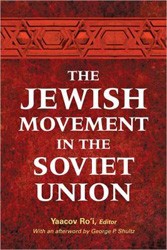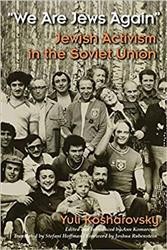This well-written, engaging book seeks to reconstruct the fabric of Jewish daily life in the dynamic city of Kiev, known as the mother of Russian Orthodox cities. Banned from living in Kiev since the 17th century, small numbers of Jews were initially allowed to obtain residence permits in 1859, with more Jews entering both legally and illegally. The period between 1859 and 1914 was one of tremendous economic and demographic growth and cultural change, especially for Russia’s Jews, who were largely restricted to the notorious Pale of Settlement.
Mostly impoverished Jews poured into Kiev from the economically stunted and conservative small market towns or shtetlekh. Like Jews who made the trans-Atlantic voyage to America, many Jews in Kiev felt constrained to give up aspects of traditional Jewish life, customs, and ritual, such as the Sabbath, kosher food, and regular synagogue attendance, in order to make a living and succeed materially. For many young Jews, Kiev was a place to forge a new assimilated Russified identity, which paradoxically triggered fear of hidden Jewish dominance of Kiev.
The author makes creative use of a broad range of primary and secondary sources in many languages, found in libraries and archives in Russia, Ukraine, Israel, and the US. Diaries, memoirs, court records, petitions, newspaper articles, and advertisements are used to reconstruct threads of history, in addition to short stories, novels, and poetry. The book examines how the Jewish community was organized and looks at the dynamic change in Russian and Russian-Jewish civil society during the final decade before the First World War.

Nonfiction
Kiev: Jewish Metropolis. A History, 1859 – 1914
- Review
By
– December 21, 2011
Robert Moses Shapiro teaches modern Jewish history, Holocaust studies, and Yiddish language and literature at Brooklyn College of the City University of New York. His most recent book is The Warsaw Ghetto Oyneg Shabes-Ringelblum Archive: Catalog and Guide (Indiana University Press in association with the U.S. Holocaust Memorial Library and the Jewish Historical Institute in Warsaw, 2009). He is currently engaged in translating Polish and Yiddish diaries from the Łódź ghetto and the Yiddish Sonderkommando documents found buried in the ash pits at Auschwitz-Birkenau.
Discussion Questions

Jewish literature inspires, enriches, and educates the community.
Help support the Jewish Book Council.



